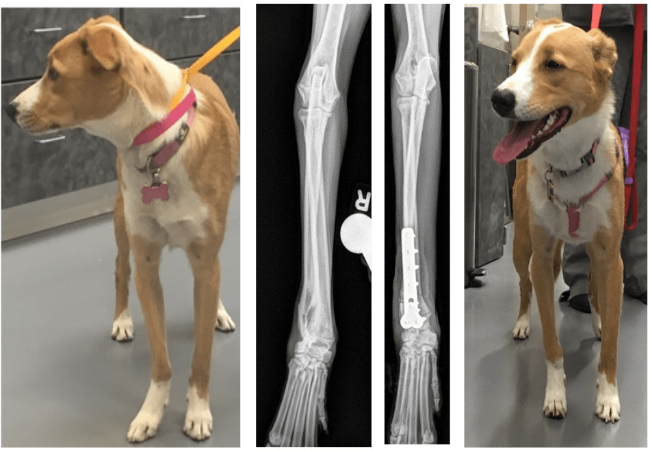Veterinary Guide to Antebrachial Growth Deformities in Dogs (2025)🐶

In this article
Veterinary Guide to Antebrachial Growth Deformities in Dogs (2025)🐶
By Dr. Duncan Houston BVSc
🔍 What Are Antebrachial Growth Deformities?
Antebrachial growth deformities (AGDs) occur when the radius and ulna grow unevenly—often due to premature growth plate closure—resulting in bowed, twisted or shortened forelimbs, commonly affecting large breeds. 🦴
💡 Causes & Risk Factors
- Trauma: Salter-Harris injuries disrupt growth plates, most commonly the distal ulna
- Congenital/genetic: Seen in chondrodystrophic breeds like Basset Hounds, Skye Terriers, Dachshunds
- Osteochondrosis or nutritional issues: imbalance may contribute to growth disturbances
- Premature growth plate closure: distal ulnar physis closure is a frequent trigger, leading to carpal valgus, procurvatum, rotation
🚨 Signs to Watch For
- Visible limb bowing, twisting, shortening
- Lameness, especially after exercise, or gait abnormalities
- Pain or decreased range at elbow/carpus; joint incongruence
🔬 How It's Diagnosed
- Orthopedic exam reveals angular deviation, limb discrepancy
- Radiography (orthogonal views) used to measure angles, identify CORA
- CT scan aids complex deformity planning (e.g., bilateral cases)
- CORA methodology guides decision on osteotomy location and correction angles
🛠 Treatment Options
- Ulnar ostectomy: for young dogs (<6 mo) to allow radius catch‑up; may correct mild valgus (<25°) spontaneously
- Corrective osteotomy: wedge closing or opening cuts through radial/ulnar shafts, with plate/screw stabilization
- Circular external skeletal fixation (CESF): ideal in immature dogs—allows angular correction plus distraction osteogenesis; devices applied pre‐planned via 3D or CT guides
- 3D-printed guides and implants: enhance precision of osteotomy cuts and plate placement
📈 Prognosis & Follow-Up
- Early surgical correction yields excellent outcomes—Monty (Springer Spaniel) regained normal gait post-bilateral surgery
- CESF yields bone union in ~75% immature dogs; mild complications like OA or pin tract issues occur
- Follow-up imaging every 6–12 weeks is essential for hardware and alignment checks
🛡 Owner Care & Prevention
- Monitor growing puppies for early signs; consult vet promptly
- Avoid excessive supplements and rapid growth in young dogs
- Prevent trauma to limbs in sensitive young dogs
- Breeding consideration: avoid breeding dogs with AGDs
🔧 Tools & Support Services
- Ask A Vet App: 24/7 access for gait assessment, imaging advice, and post-op care 📱
✅ Final Thoughts
Antebrachial growth deformities, caused by uneven forelimb growth, require early detection and customized surgical correction. Whether using ulnar ostectomy, osteotomy with plates, or cutting-edge CESF with 3D-guided techniques, the prognosis in 2025 is excellent. Tools like Ask A Vet owner confidence and ensure thorough recovery monitoring, and joint health for years to come. 🐾❤️
Download the Ask A Vet app today for tailored guidance on imaging interpretation, surgery recovery, and long-term limb wellness. 📱💡






